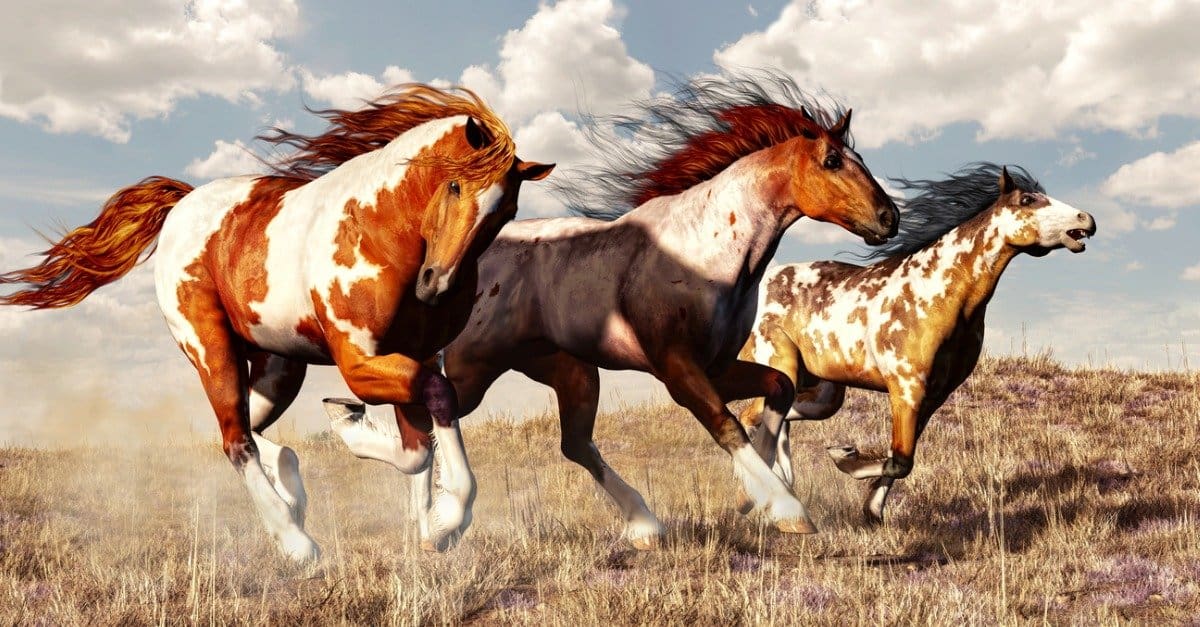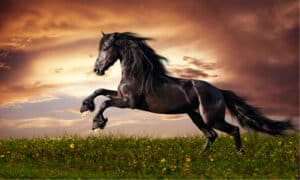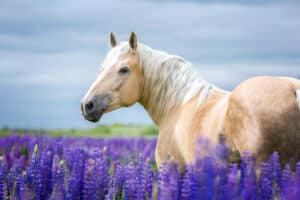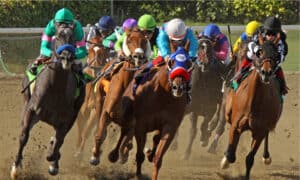“Mustang” and “bronco” are two of the most common terms that refer to horses. Both have sports teams and models of cars named after them. What do these two terms mean, and what is the difference between them? Keep reading to find out.
The first thing you should know about Mustangs and Broncos is that neither is a breed of horse. Mustangs are a specific population of wild horses that live in the American West. They descended from Spanish horses that European settlers brought to North America. Some of these horses escaped or were abandoned and adapted to living in the wild. They formed herds with other escaped horses and began to breed on their own, creating a thriving population of wild horses that still exists today.
Bronco, on the other hand, is a more general term. The word bronco comes from a Spanish word meaning “rough” and originally referred to any untrained horse. Nowadays, it more often refers to horses that are intentionally bred or raised to act “wild” for use in rodeo. A bronco can also be a mustang, but most broncos nowadays have ancestry with breeds such as quarter horses, thoroughbreds, and draft horses to utilize the strength and athleticism of those breeds.
Physical Appearance
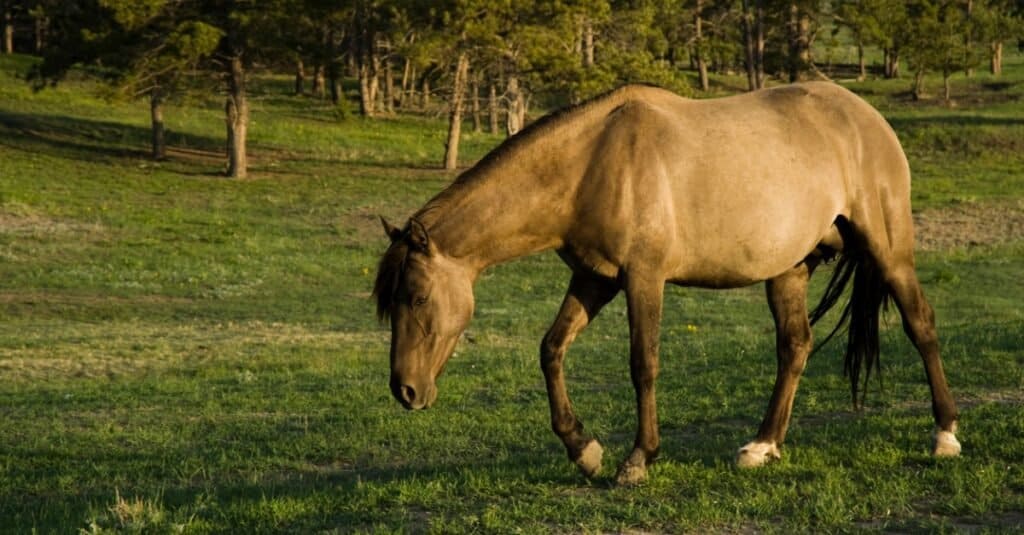
Sorraia Mustangs are a variety of mustangs that strongly resemble their Spanish ancestors.
©iStock.com/karenparker2000
Although neither is an official breed, both mustangs and broncos have particular physical traits associated with them.
Mustangs are on the smaller side for horses, measuring 14 to 15 hands in height and weighing about 800 pounds. They have a sleek build and excel in speed, agility, and stamina. They also have strong hooves and are good at navigating difficult terrain, a trait that helps them in the wild. Some specific populations of mustangs share physical traits with the Spanish horse breeds from which they descend. Because they are not a specific breed, mustangs are not any particular color and can be any color found in horses.
Broncos have fewer physical traits in common since they are not a specific population and can come from a variety of bloodlines. However, certain traits rodeos favor which therefore show up more often. Like mustangs, broncos tend to be on the shorter side for horses, since this makes them more agile and capable of turning around faster. Unlike mustangs, though, they have a stocky build and are more muscular, giving them the strength to buck riders off their backs. Like Mustangs, broncos can be any color.
Temperament
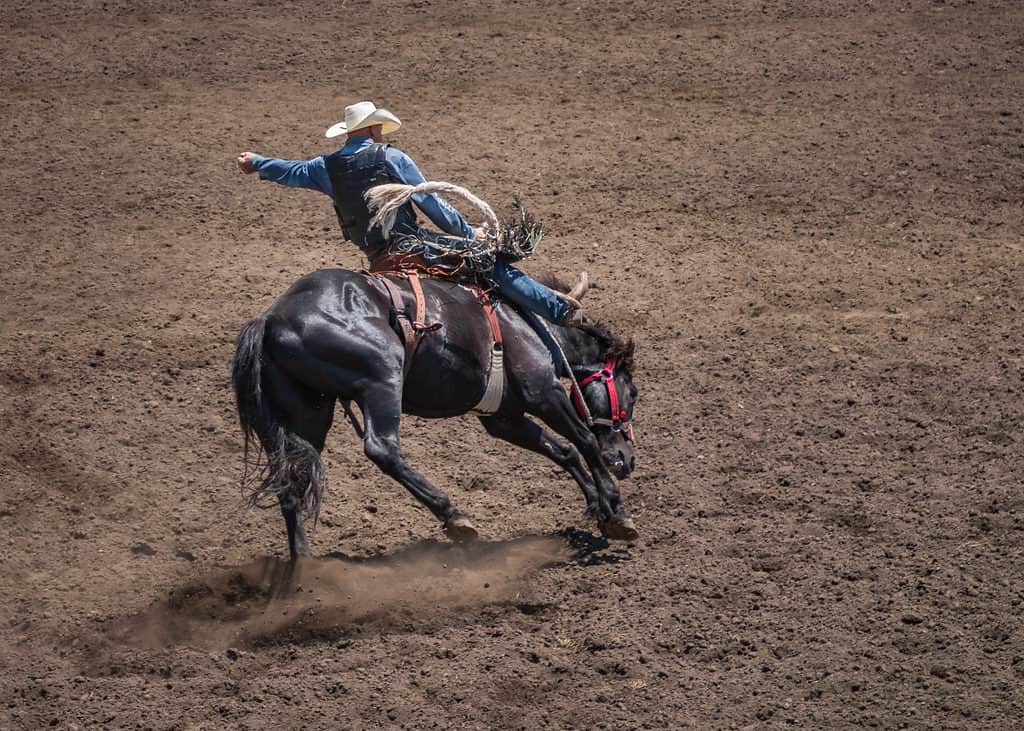
Broncos are selected for rodeo based on their aggressive temperament.
©Timothy S. Allen/Shutterstock.com
Broncos by definition have a wild and unpredictable temperament. Rodeos breed or choose these horses based on their tendency to buck, or kick out their hind legs, especially when someone tries to ride them. Because of this, broncos can be difficult to handle and train. Only people who have lots of experience with horses should work with them.
Because they are wild horses, mustangs also have unpredictable personalities. However, it is possible to tame wild mustangs, and properly trained mustangs can develop a calm and gentle temperament. Mustangs are also intelligent and curious, which can make them easy to train. However, they are still not good horses for beginners due to their wild nature. Mustangs also tend to vary in personality since they develop naturally instead of being selectively bred. Therefore, if you are considering adopting a Mustang, it is important to get to know the individual horse before adopting.
Roles
A final important difference between mustangs and broncos is their role in human society.
Role of Broncos
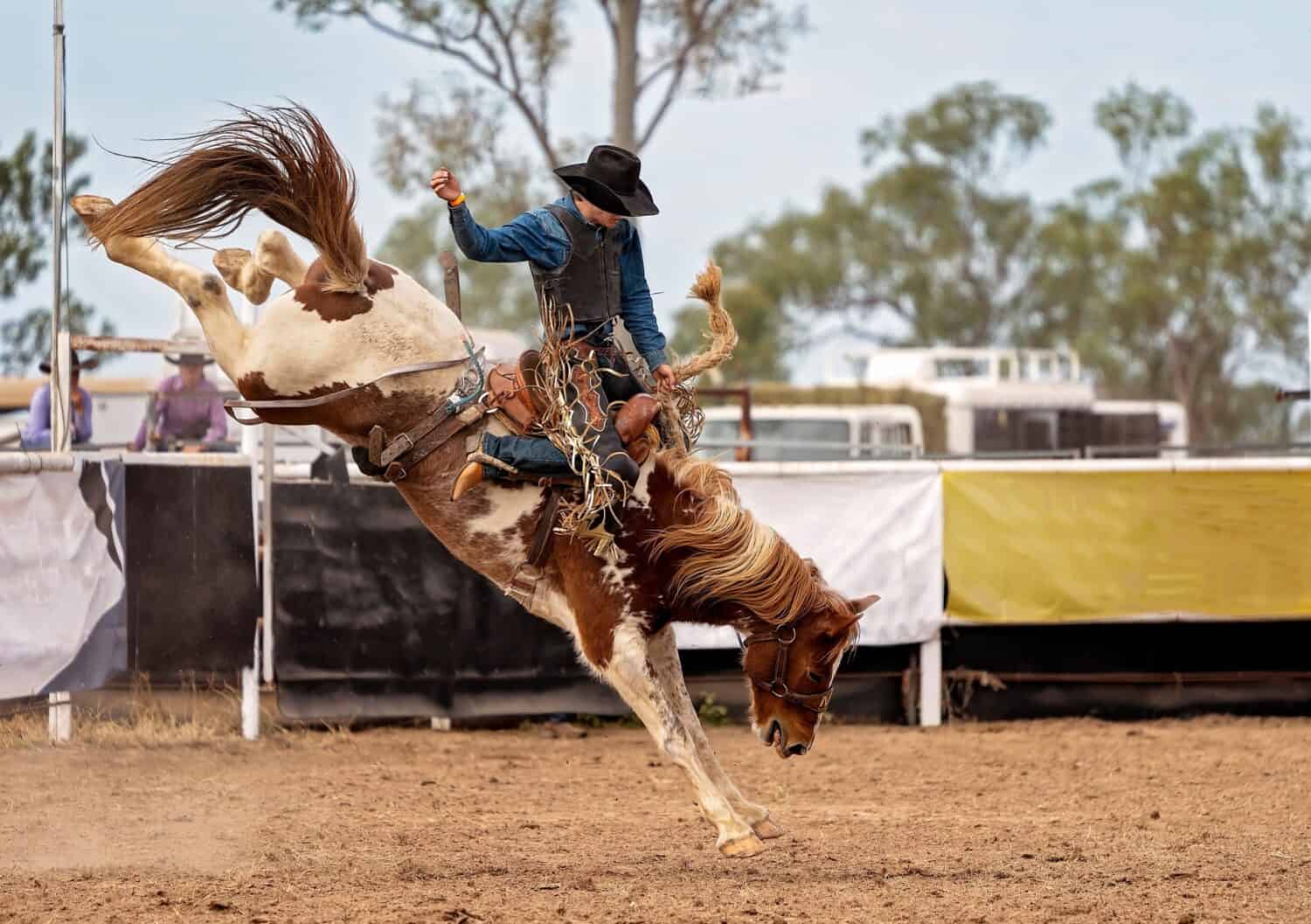
Broncos are used primarily for the rodeo sport of bronc riding.
©Jackson Stock Photography/Shutterstock.com
Broncos have a very specific role, as they are used almost exclusively for rodeo. The main rodeo sport that uses broncos is bronc riding, in which a rider attempts to stay on the back of a bucking horse for eight seconds. There are two varieties of bronc riding: saddle-bronc riding, in which the rider sits in a saddle, and bareback-bronc riding, in which the rider sits directly on the horse’s back with only a strap to hold onto. Bareback-bronc riding is the more difficult of the two.
Despite the popularity of bronc riding, the sport is controversial, as it and rodeo as a whole come with several ethical issues. Although broncos buck naturally, most rodeos use tools such as metal spurs and bucking straps (tight leather straps placed around a horse’s flanks) to make them buck higher or more often. These tools may cause the animals pain or discomfort. Having horses buck in an enclosed space also puts them at risk of injury from tripping and falling or from hitting the fence. In extreme cases, horses may die from these injuries. These issues are amplified by the fact that rodeos are excluded from the federal Animal Welfare Act, leaving horses with insufficient protection from cruelty.
Role of Mustangs
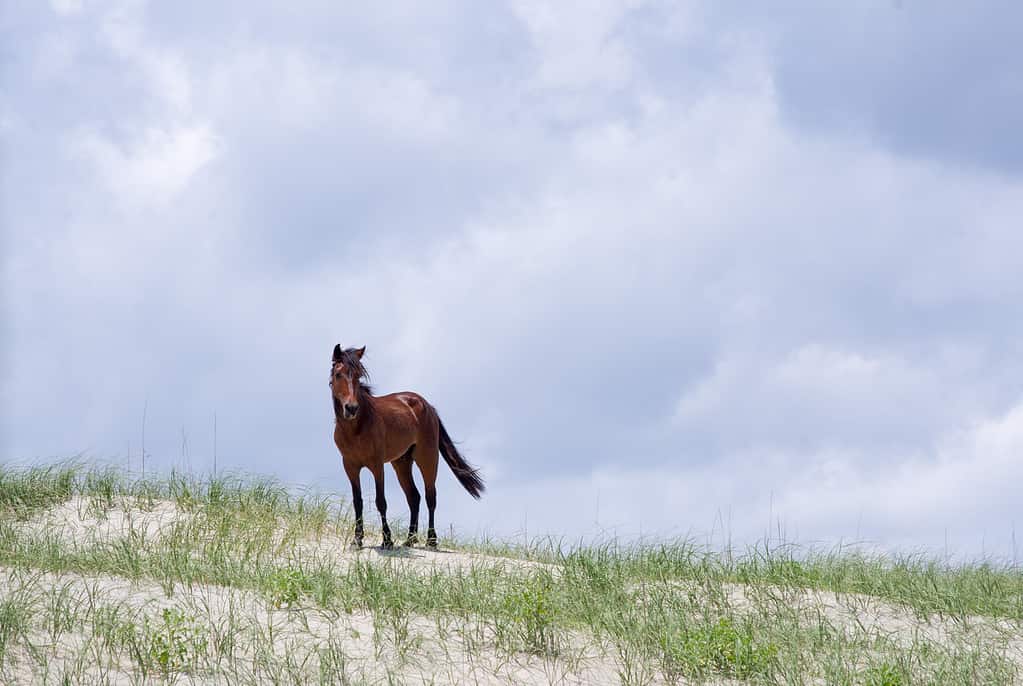
The Wild Free-Roaming Horse and Burro Act of 1971 bans the killing of mustangs.
©BHamms/Shutterstock.com
The role of mustangs in human society was once a negative one. People viewed the wild horses as a nuisance because they competed for resources with domesticated farm animals. It was once common practice to shoot or poison them. The wild mustang population greatly decreased due to these practices, causing concern among horse lovers who view them as a symbol of the American West. In 1971, the government passed the Wild Free-Roaming Horse and Burro Act, preventing individuals from killing or capturing wild mustangs.
Nowadays, the government is in charge of managing the population of mustangs. The Bureau of Land Management (BLM) does this by rounding up wild horses and adopting them out to individuals. With proper training, adopted mustangs can be ridden in a variety of contexts, including pleasure riding, ranch work, and endurance riding. Most consider the roundup to be a more humane alternative to killing horses, but it still comes with ethical issues. The modern practice of using helicopters to round up horses may cause the horses unnecessary stress and risk of injury, and horses who are not adopted may stay in government holding facilities for life or even be sent to slaughter. Because of this, some animal welfare groups are advocating for alternative solutions, such as fertility control.
Thank you for reading! Have some feedback for us? Contact the AZ Animals editorial team.

